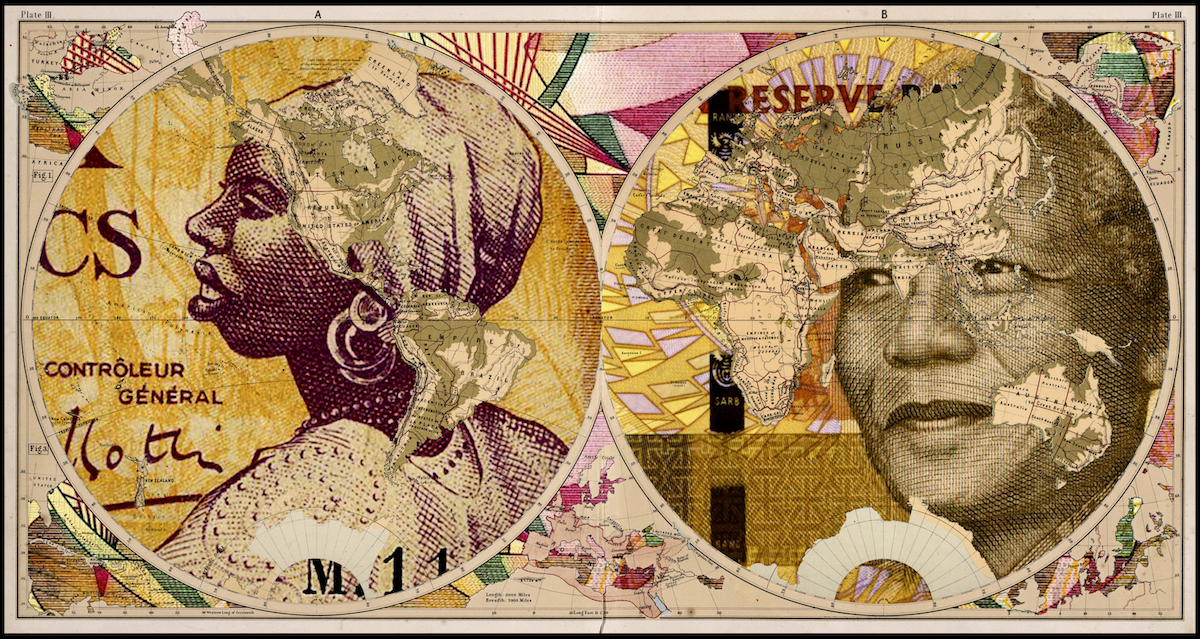
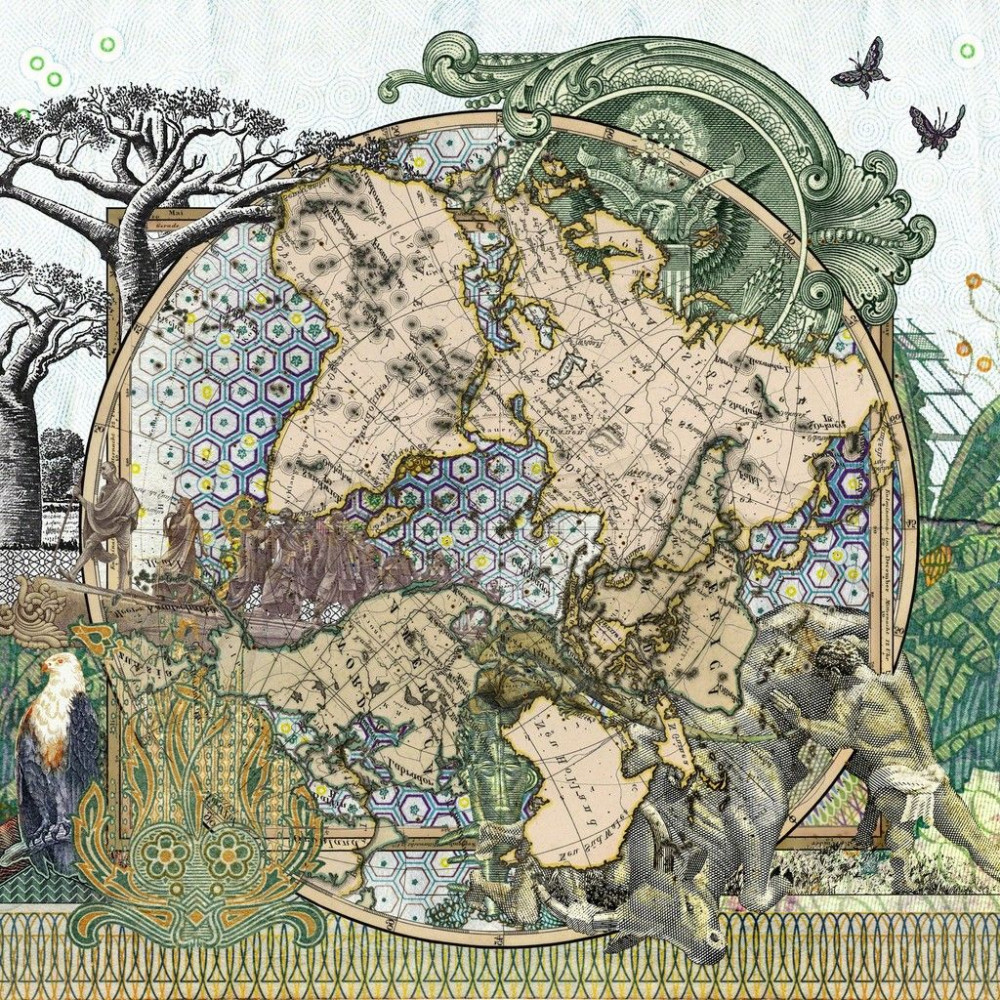
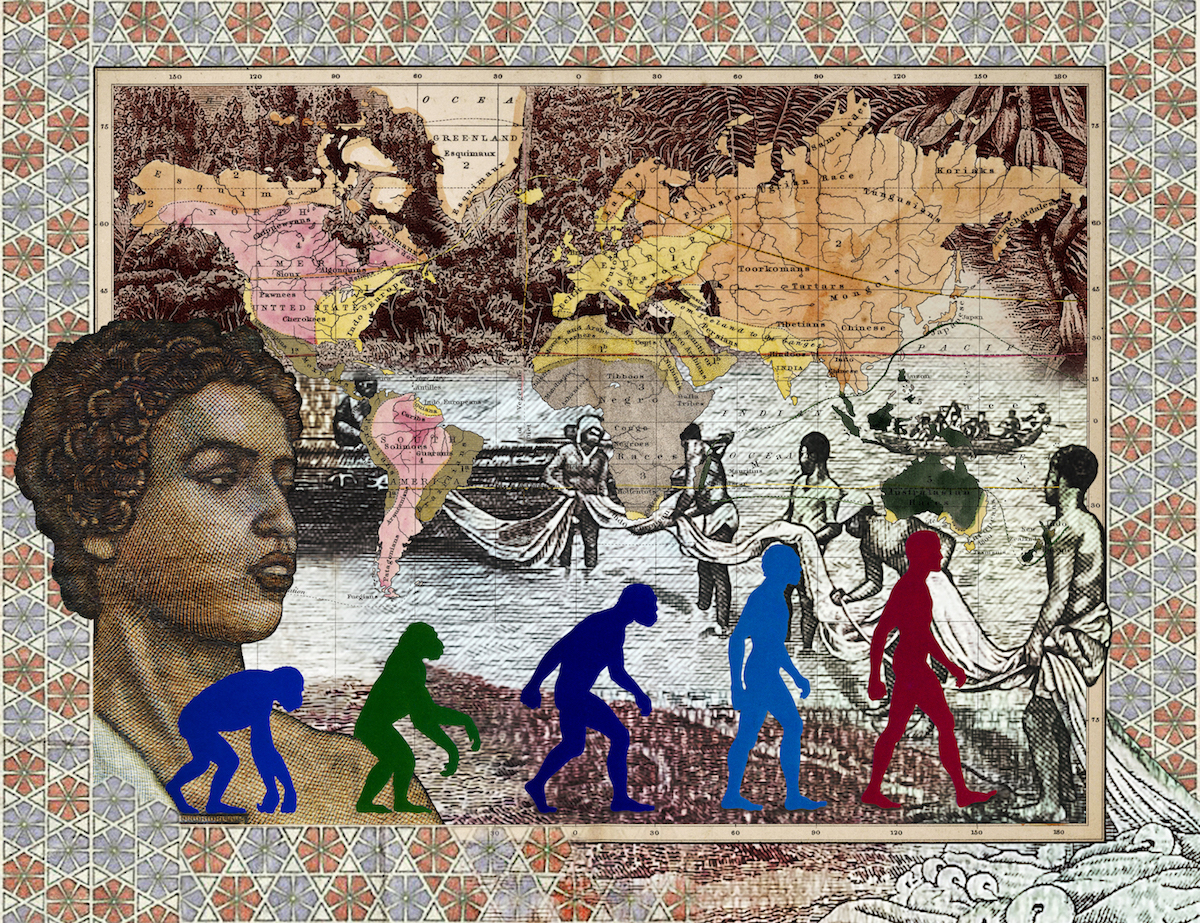
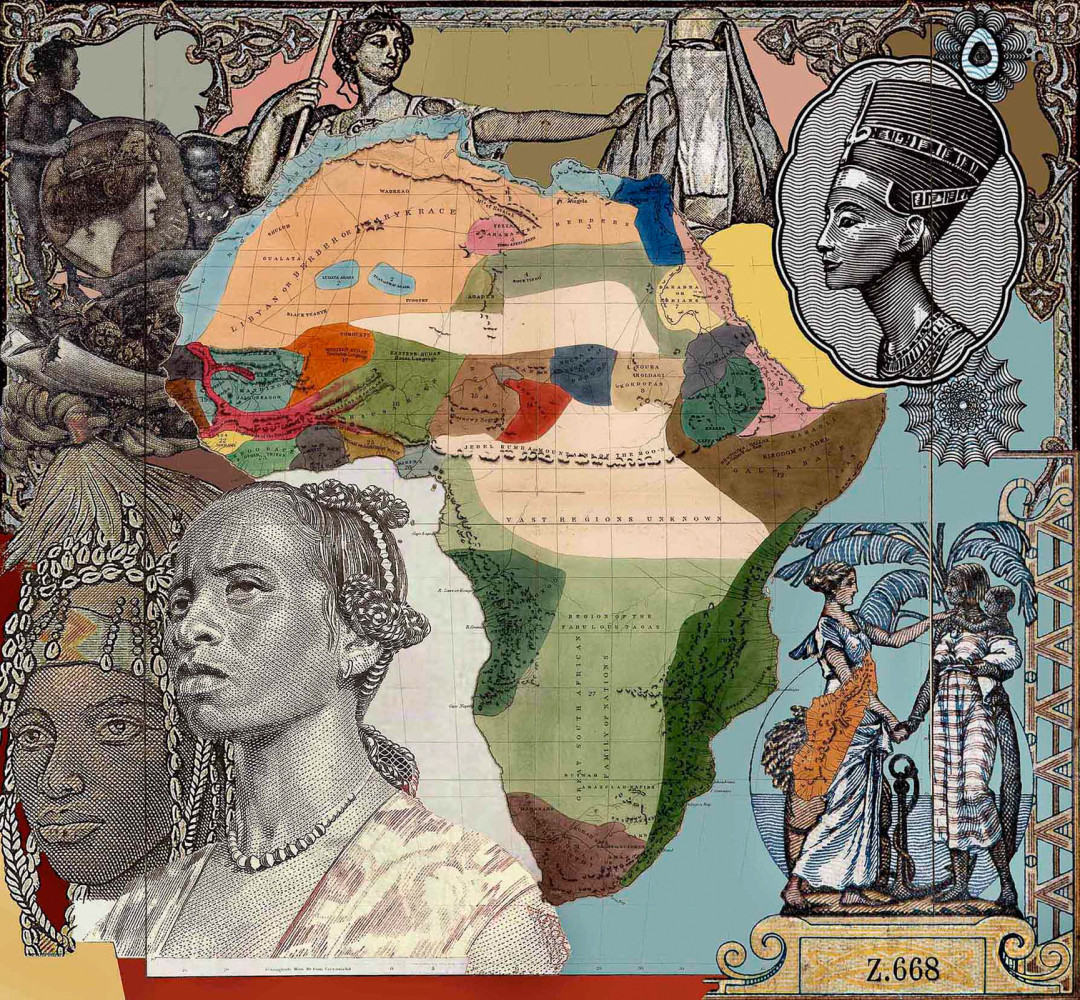

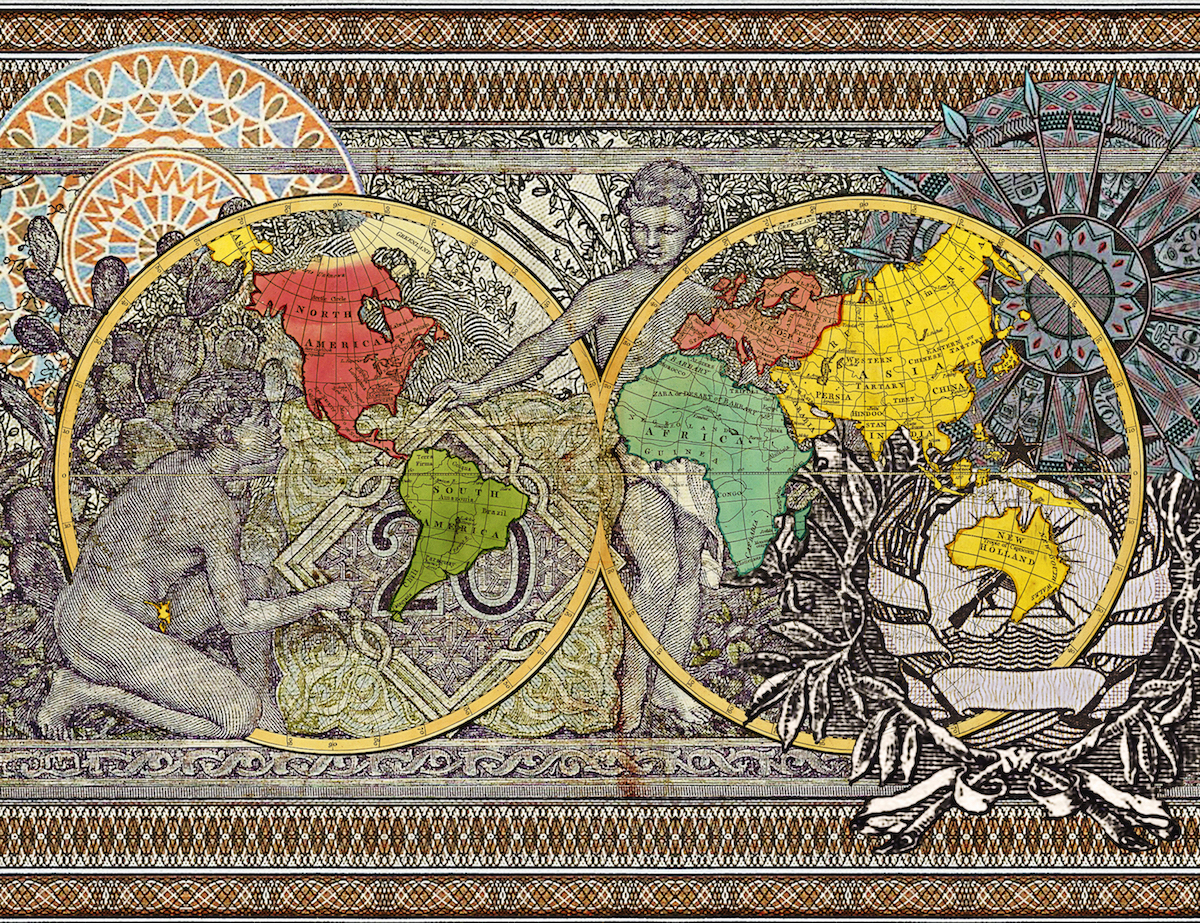
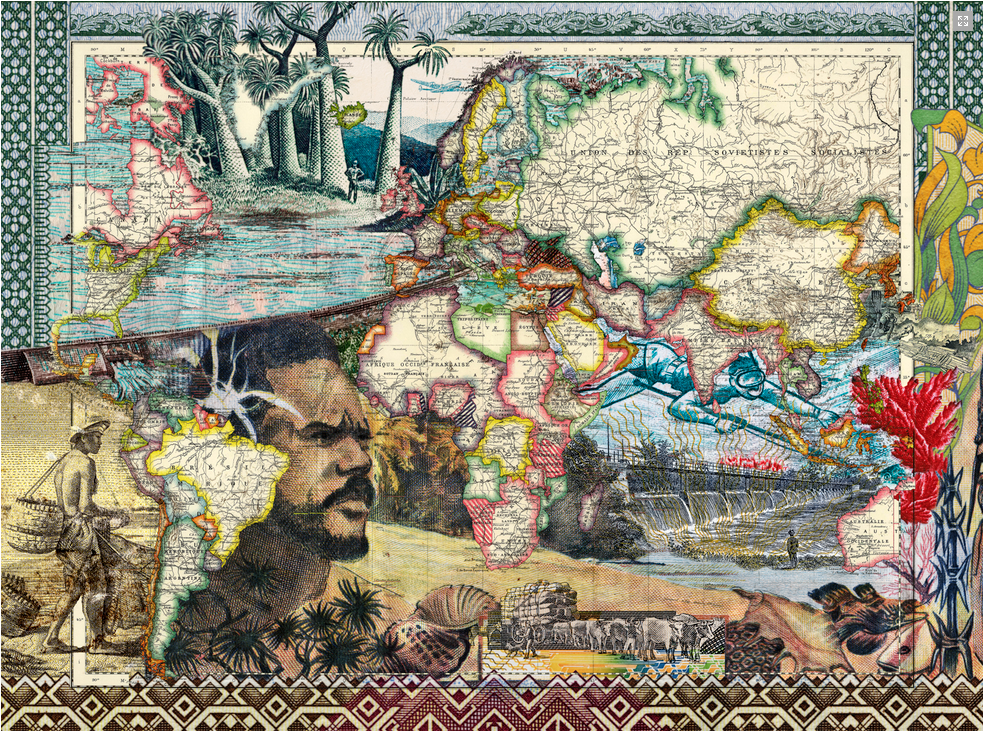
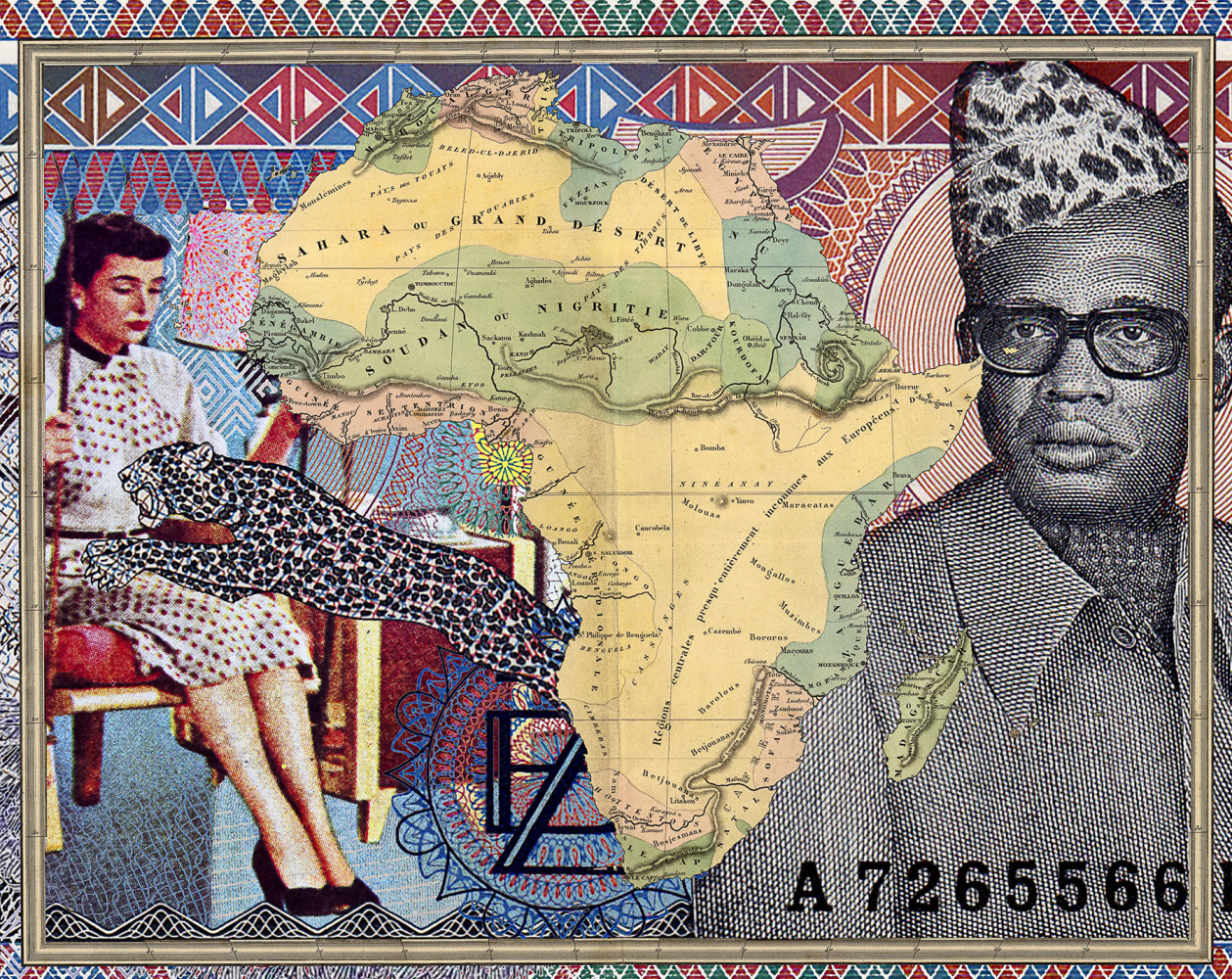
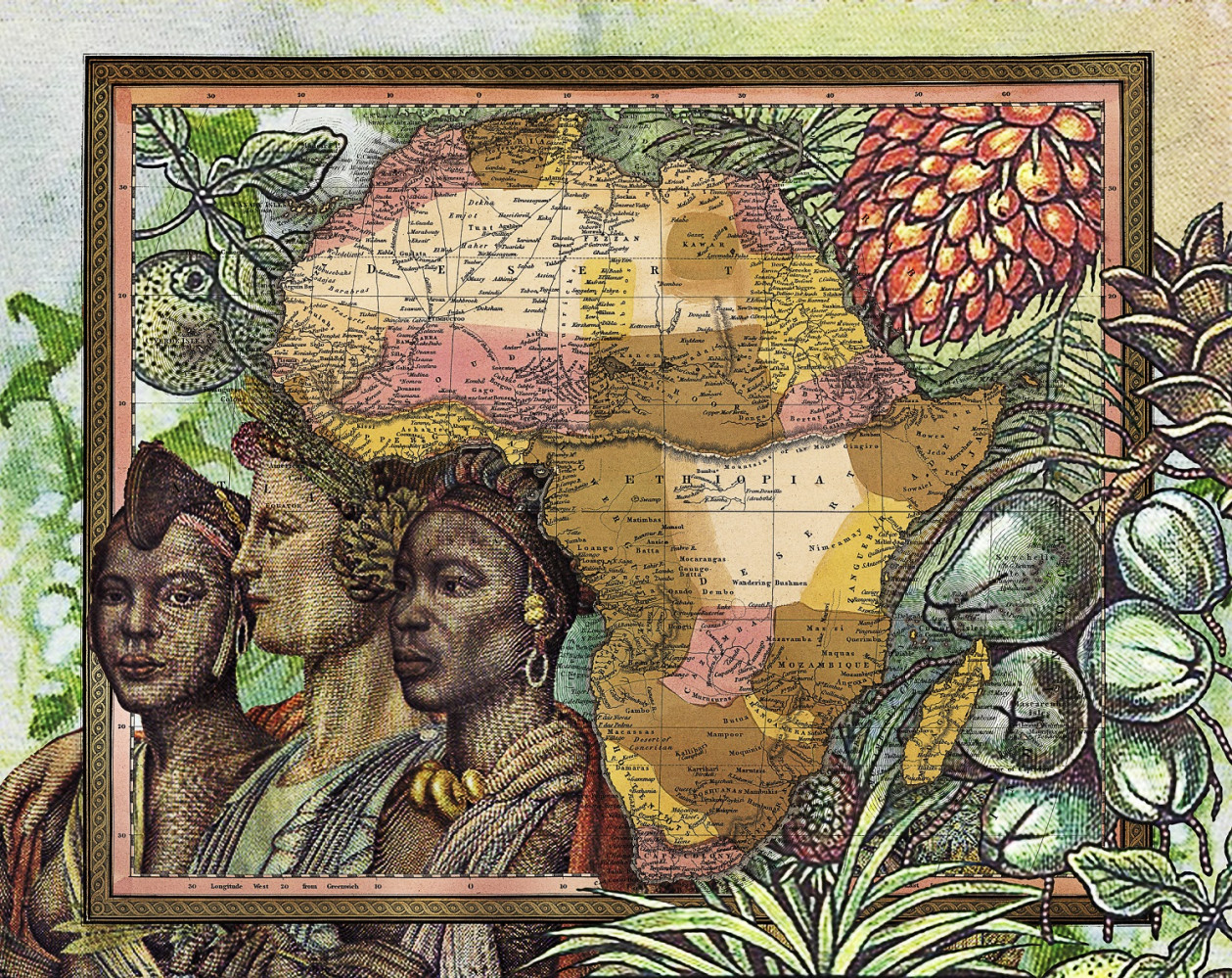
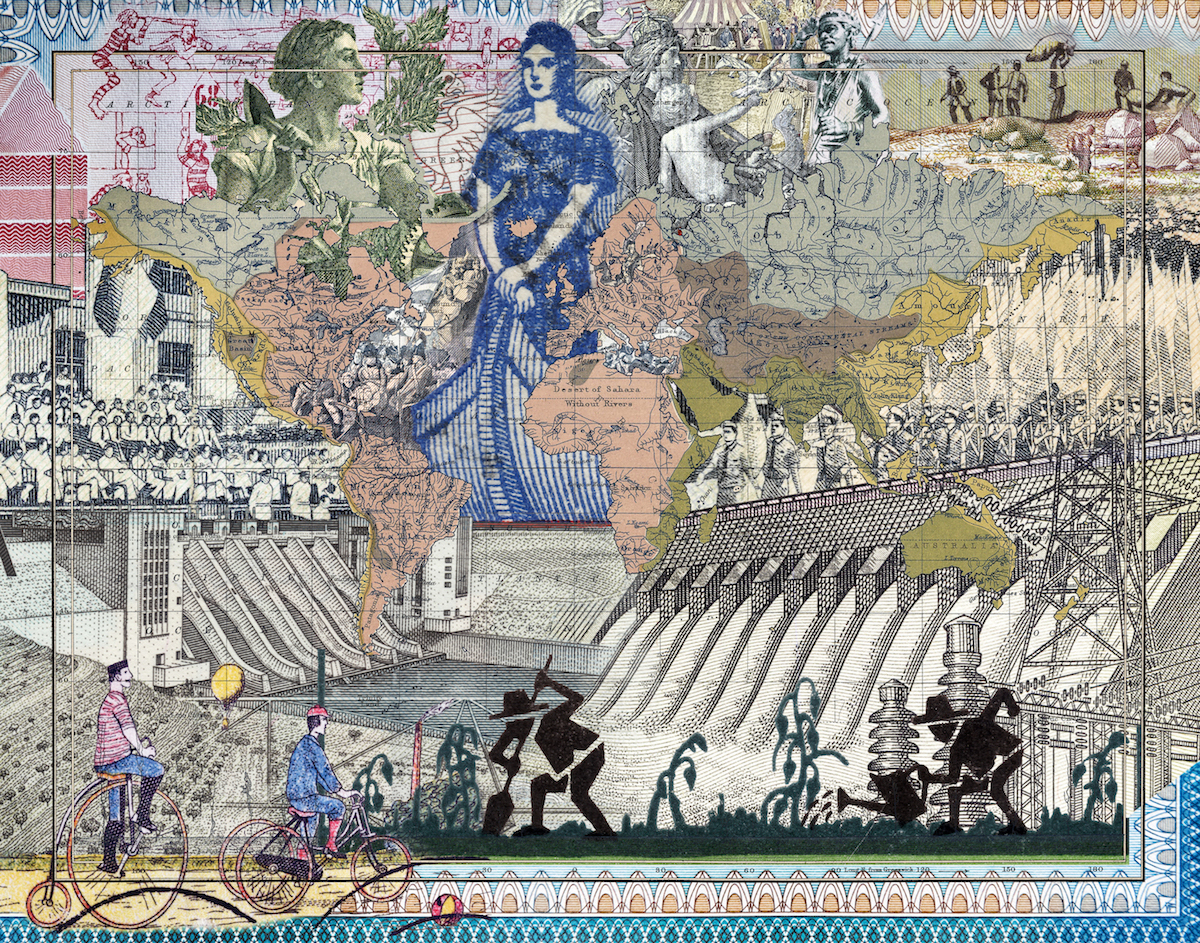
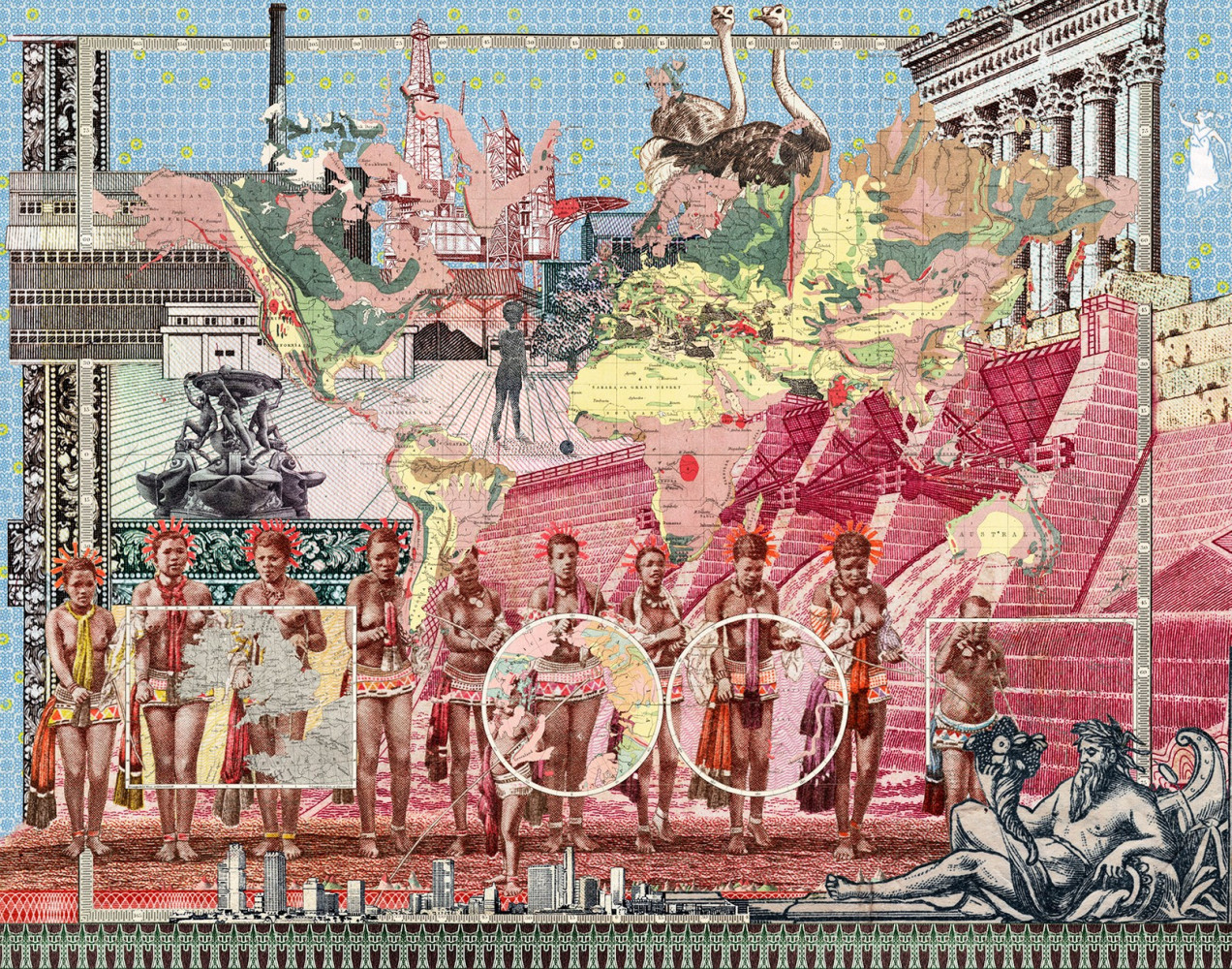
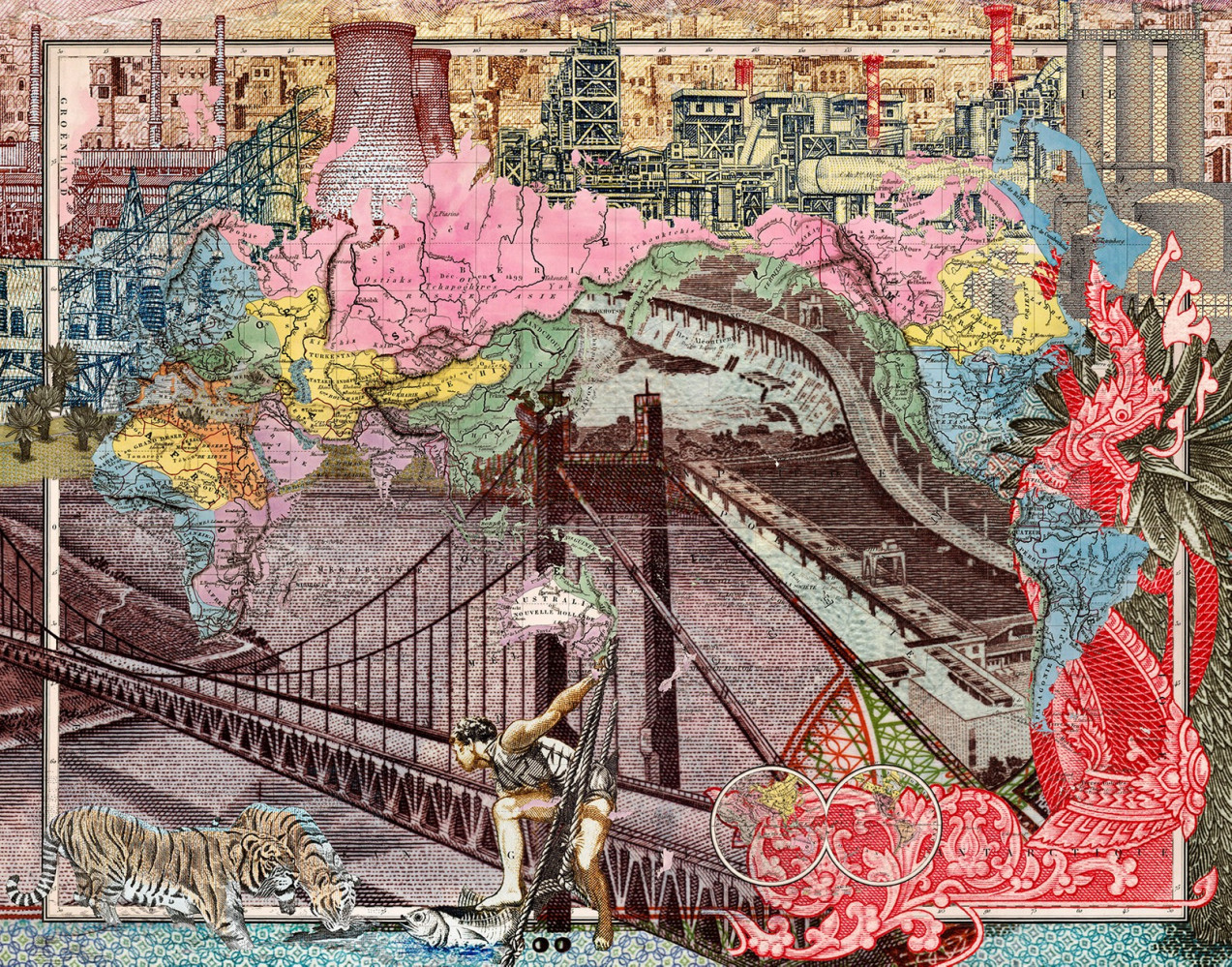
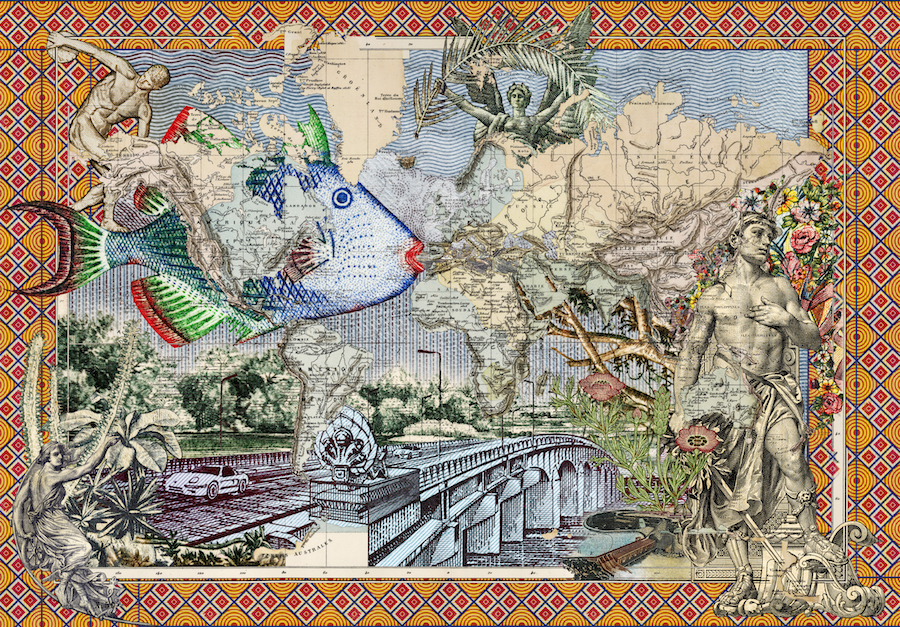

Malala Andrialavidrazana is an artist from Madagascar who, during her travels across West Africa, Asia and Latin America, perfected a form of artistic expression that allows her to capture the cultural transformation taking place in modern societies.
Each of the minutely detailed photomontages by Andrialavidrazana is made of signs and symbols that are rooted in the past. By mixing and combining elements from various sources, the artist brings out the potential carried with each new layer of information. The compositions created this way cast a new light on what we know – or what we think we know – about the world.
Malala Andrialavidrazana’s works are remarkably personal in their nature, actively referring to the idea of territory – a concept the artist had researched for several years. Her images are filled with concern about cross-cultural dialogue, locality, and all kinds of sociological, economic and political constructs that stand – even if just a little – against the constant advance of globalization.
To tell us her tale, Andrialavidrazana uses resources from colonial archives, such as maps, album covers or post stamps, reminding us that iconography was one of the most powerful political and ideological tools of the 19th century. Such artworks were once as impactful as the design of the post-colonial banknotes – also used by the artist – that promoted stereotypes, supported by consecutive regimes and their leaders. Moreover, the banknotes were a symbol of the economic dominance that lasted in spite of political transformations.
In her series Figures, Andrialavidrazana redefines the meaning of the signs and representations she is using. The artist believes that through recomposing or even rewriting history, she can “give more perspectives on powers outside politics and [introduce] a rebalance between men and women, North and South, tradition and modernity.”
Tomasz Wichrowski
Translated by Aga Zano






